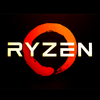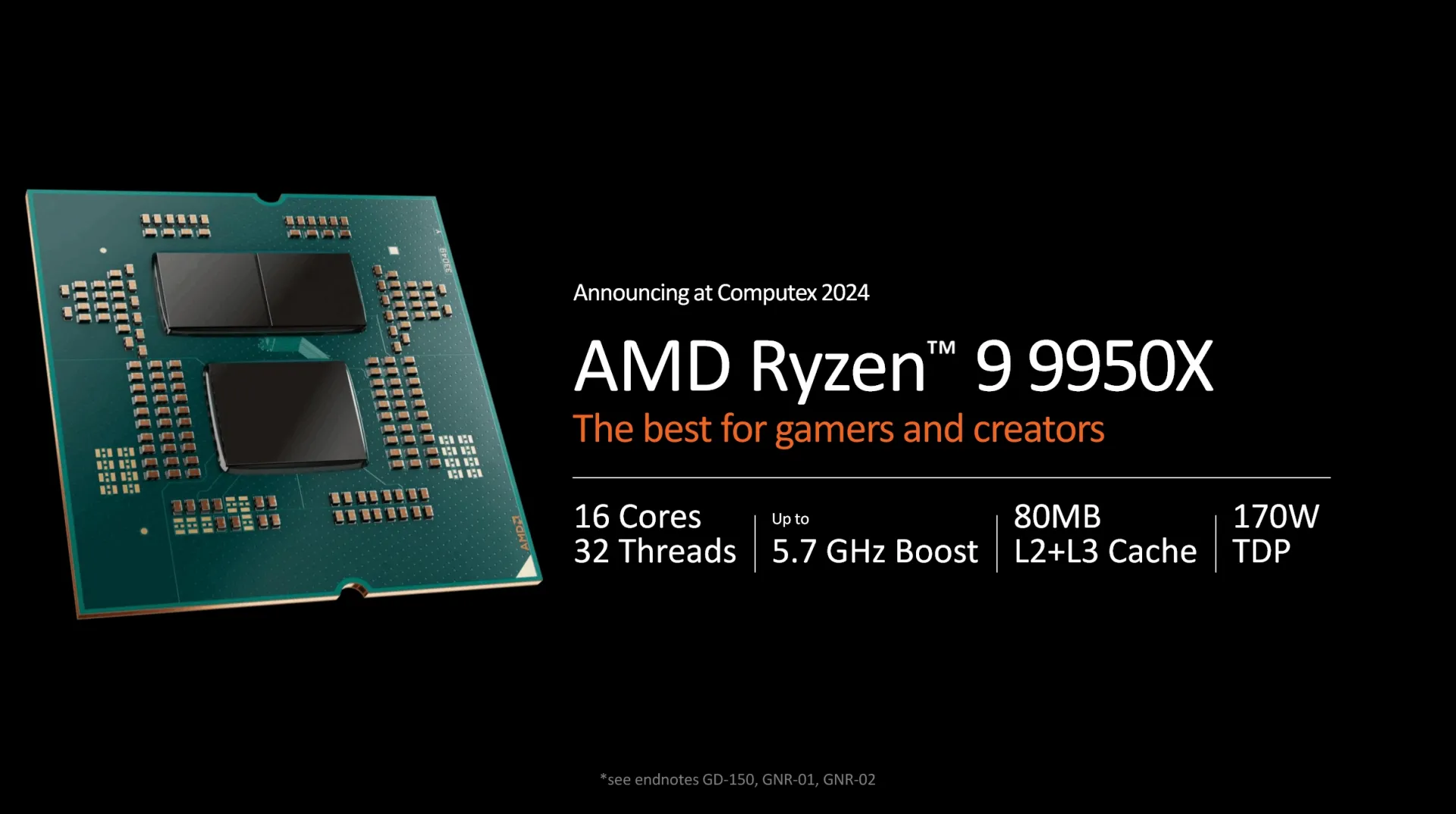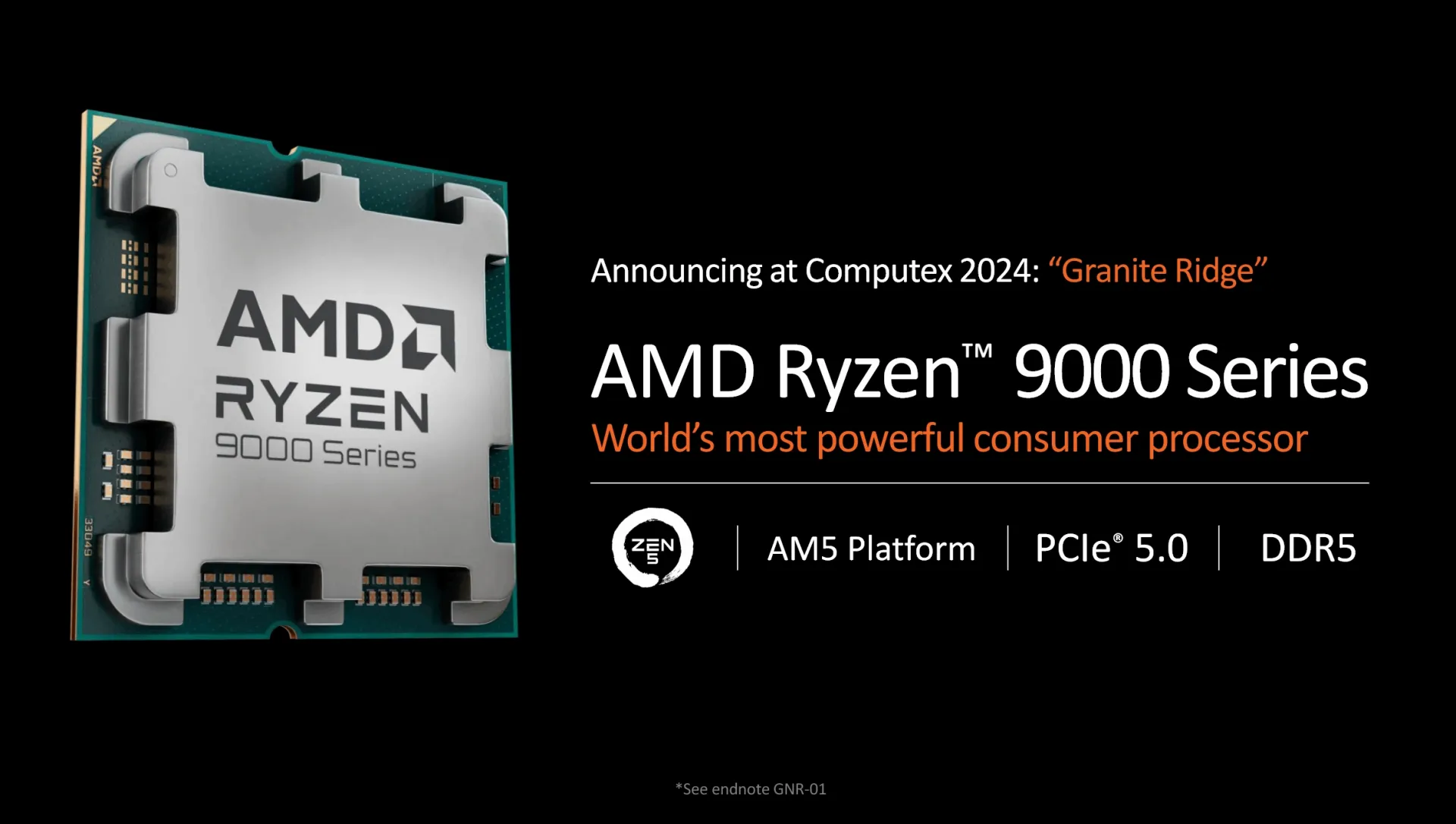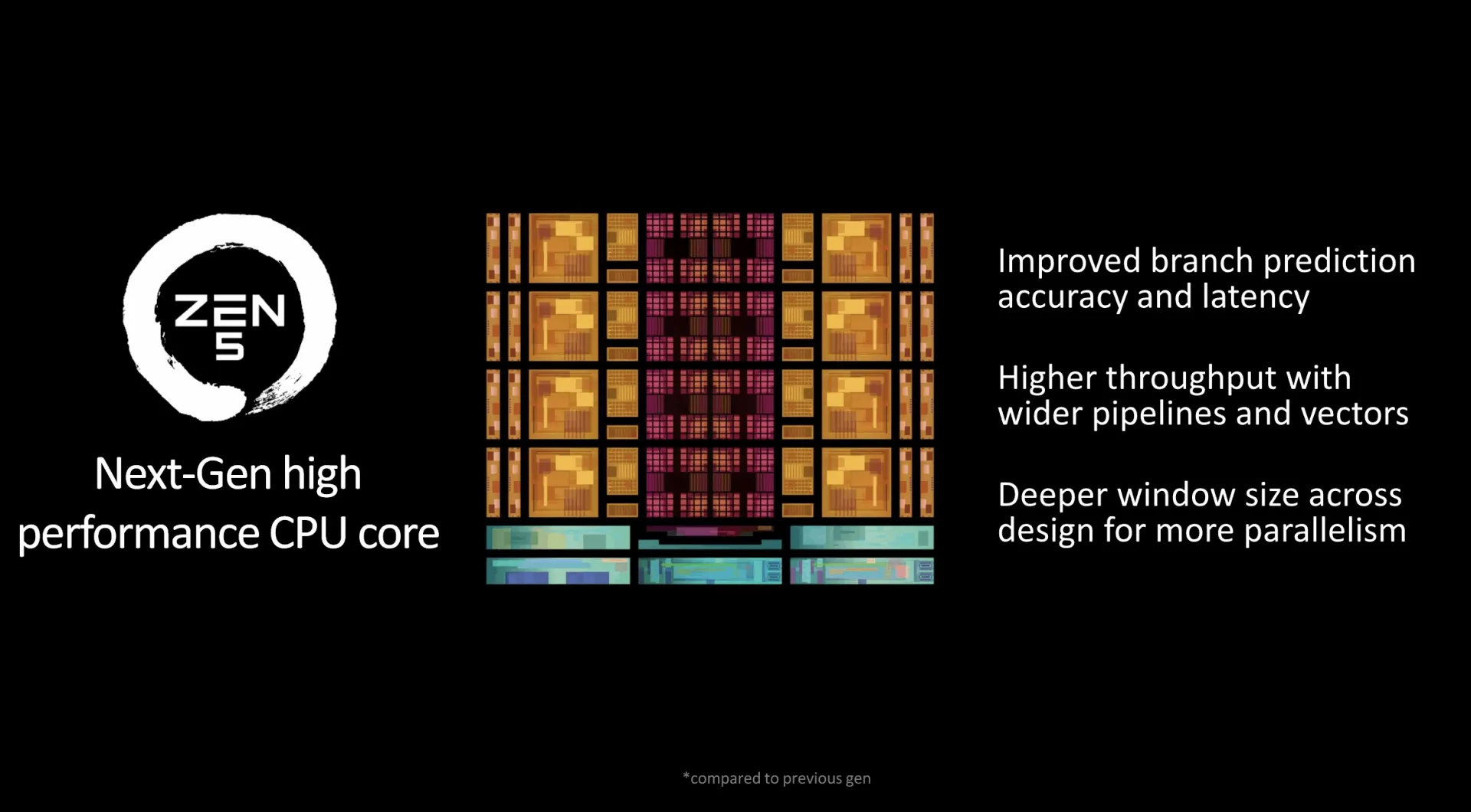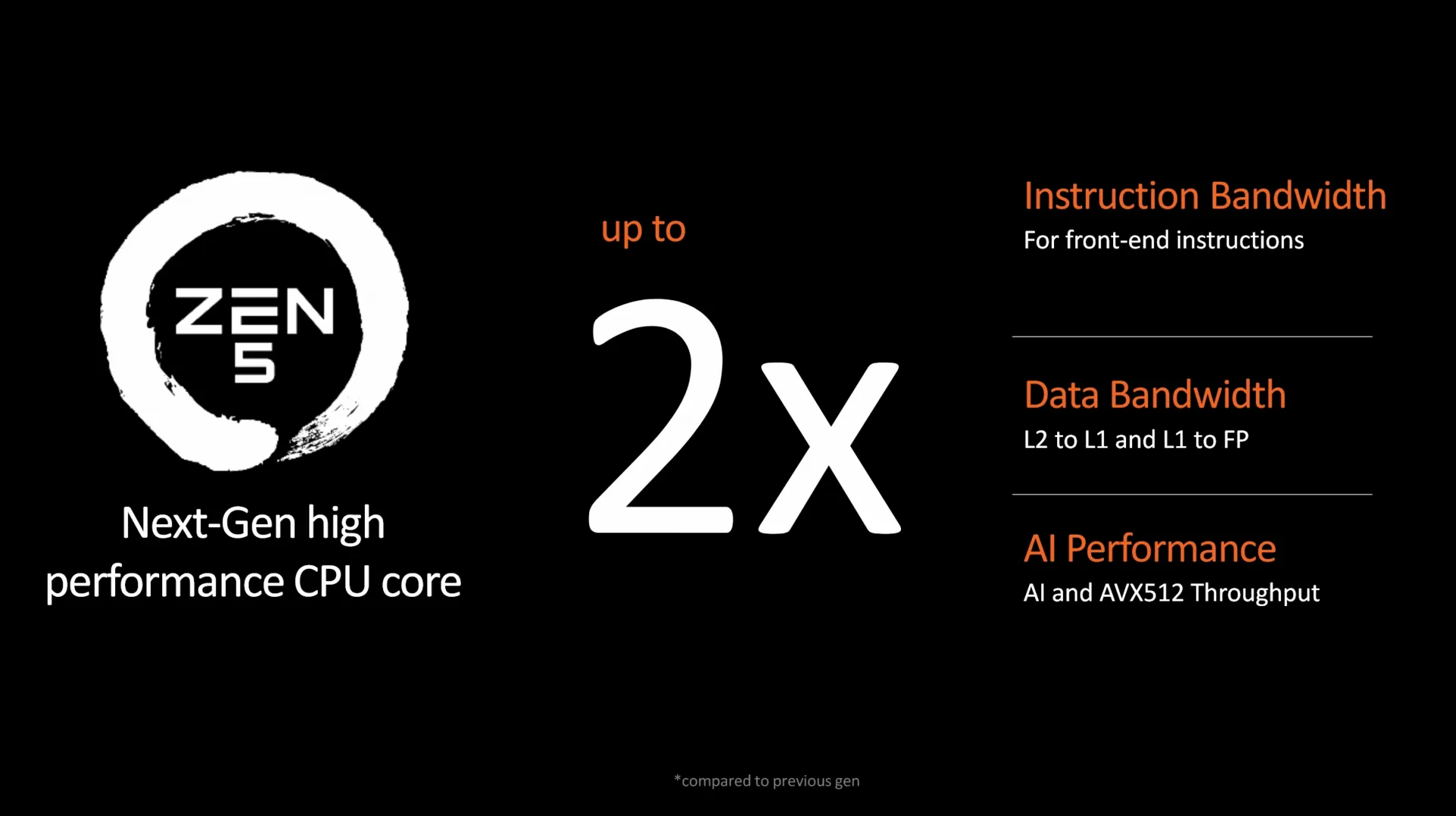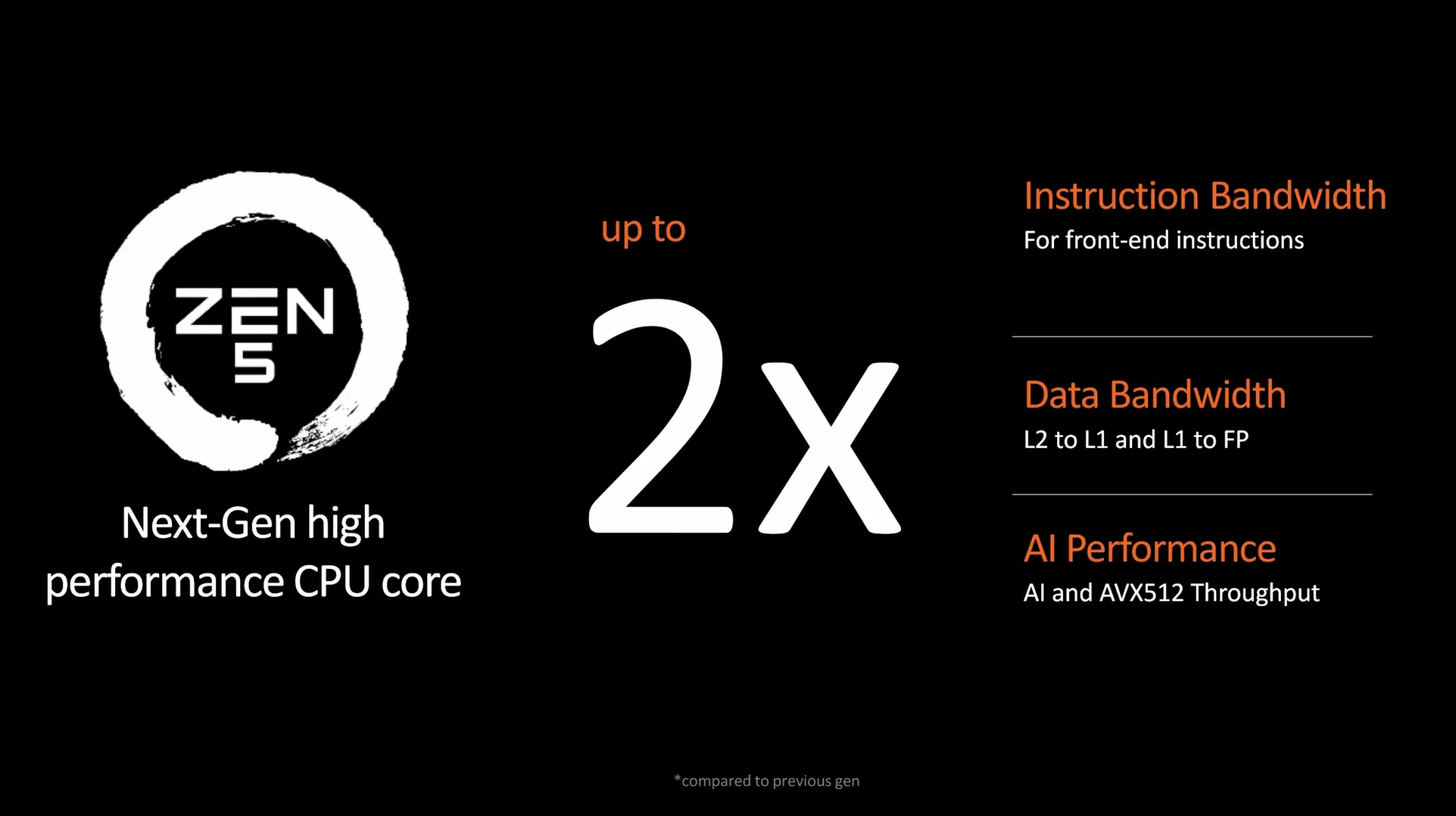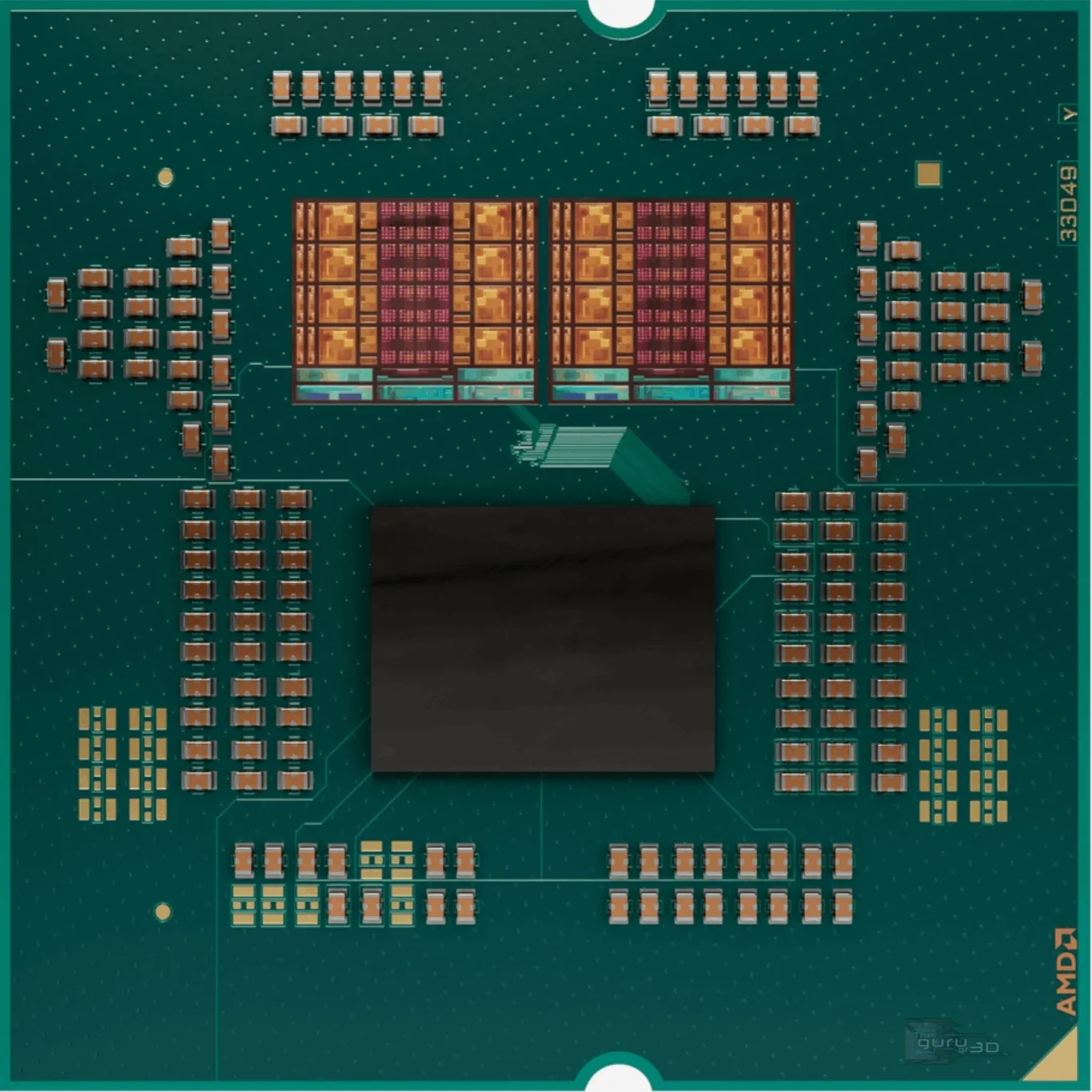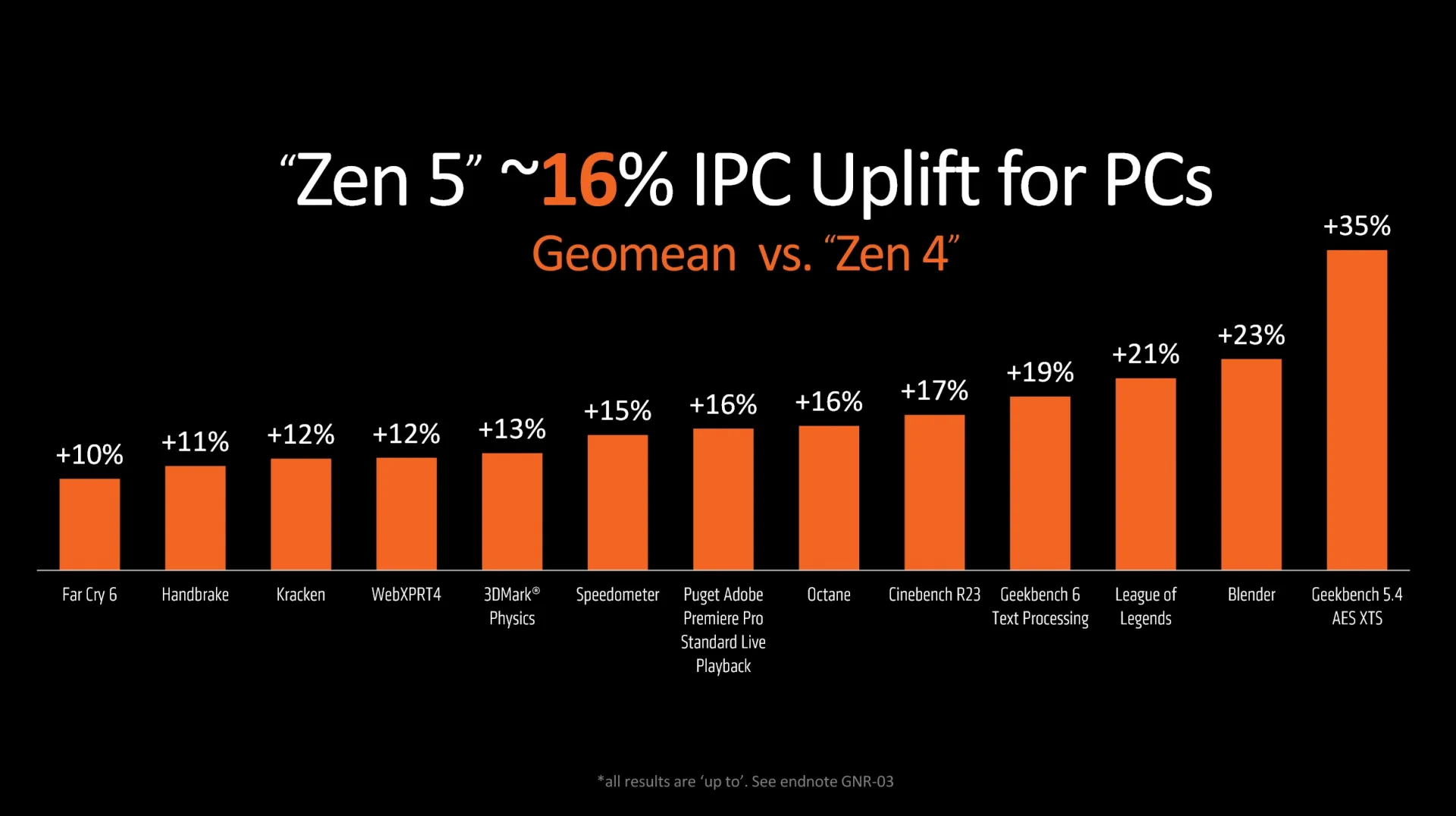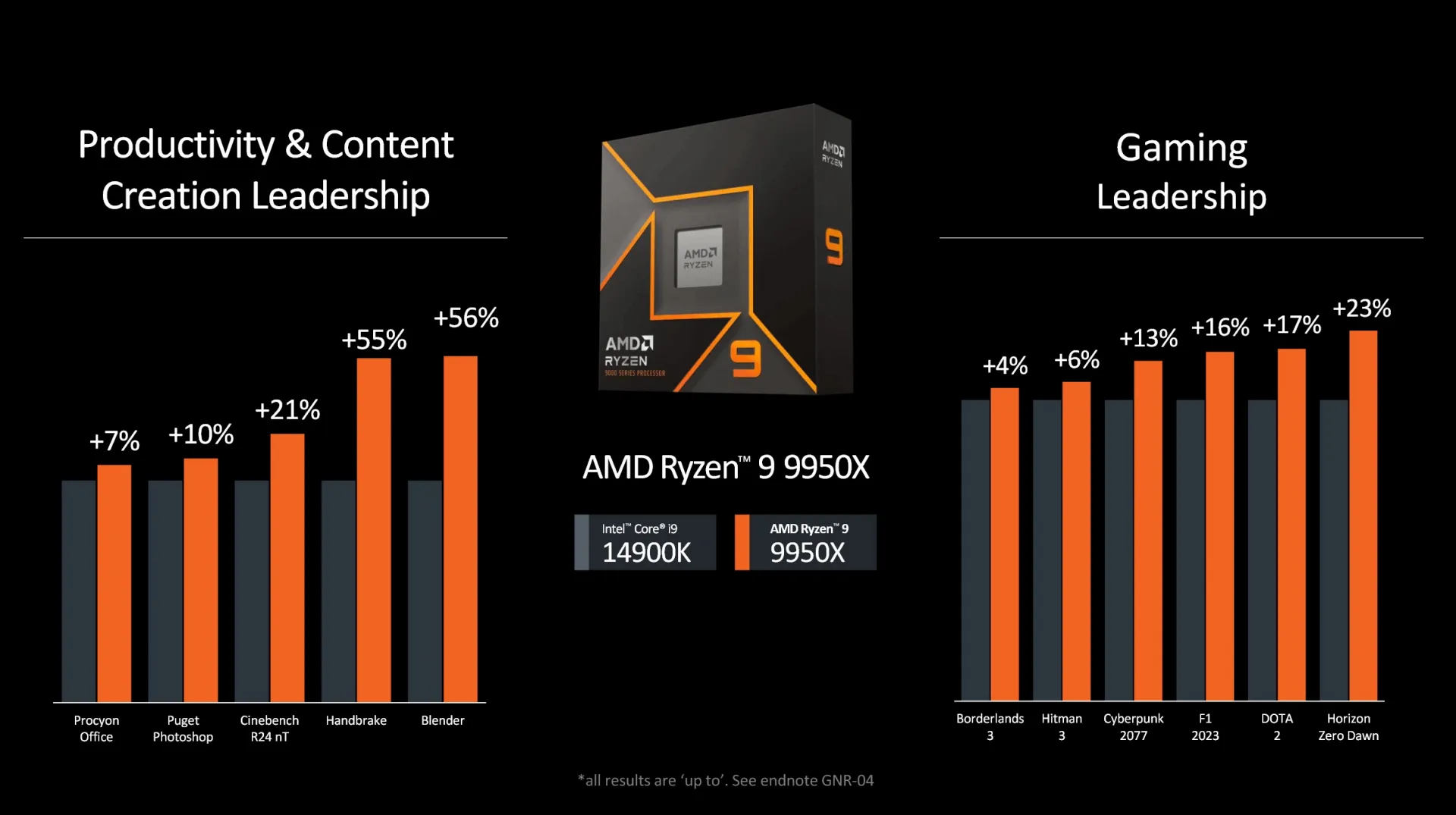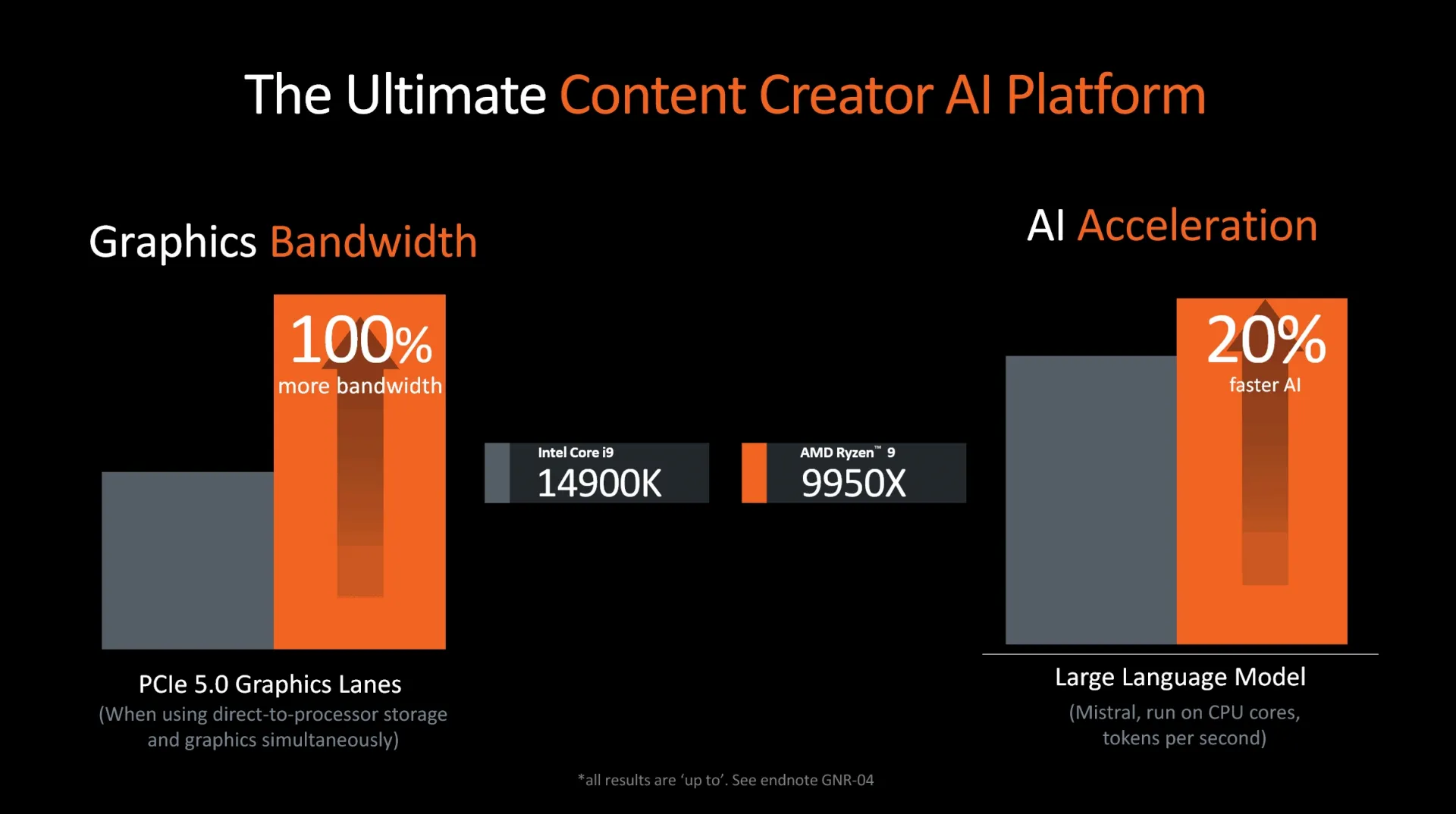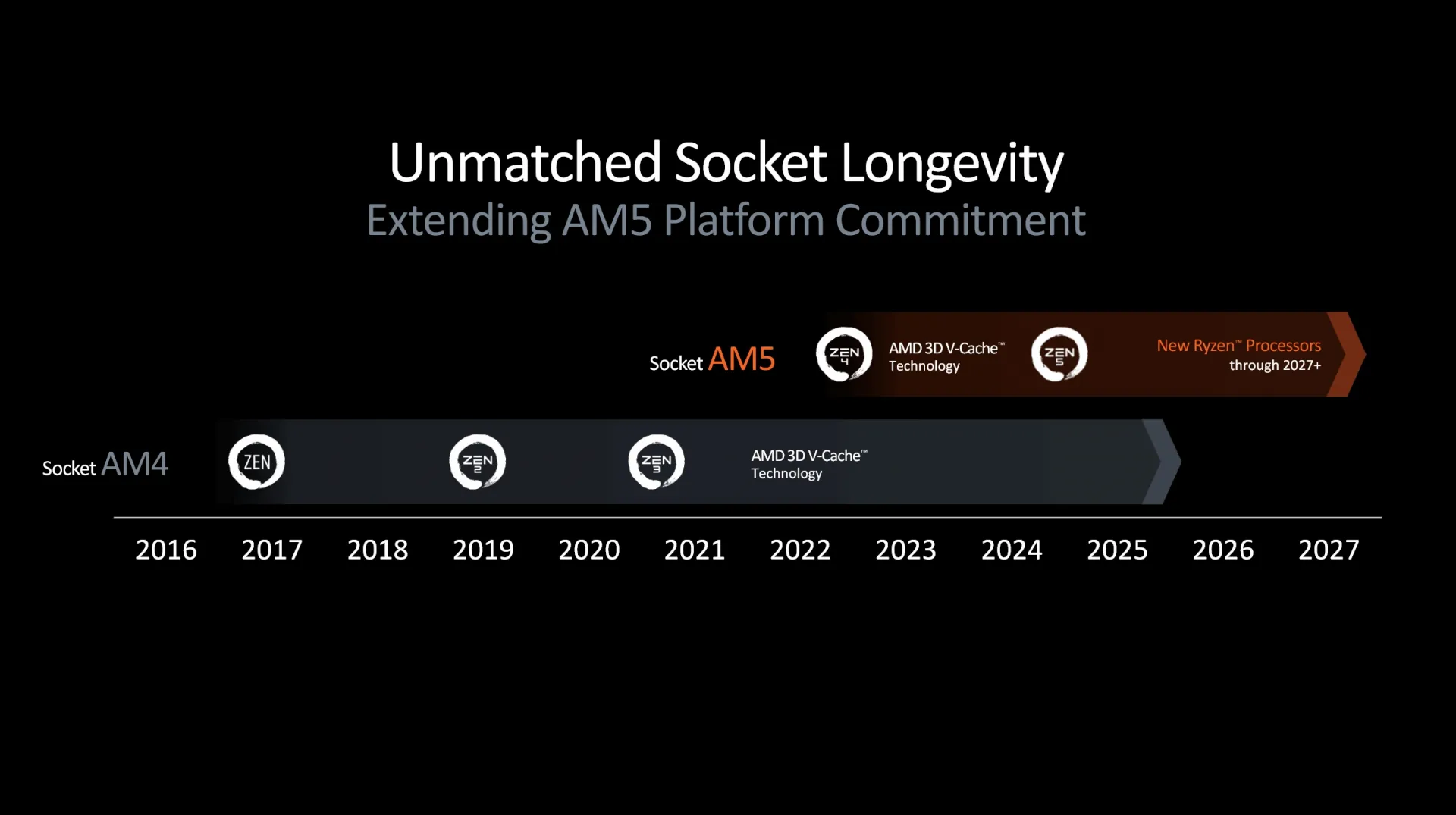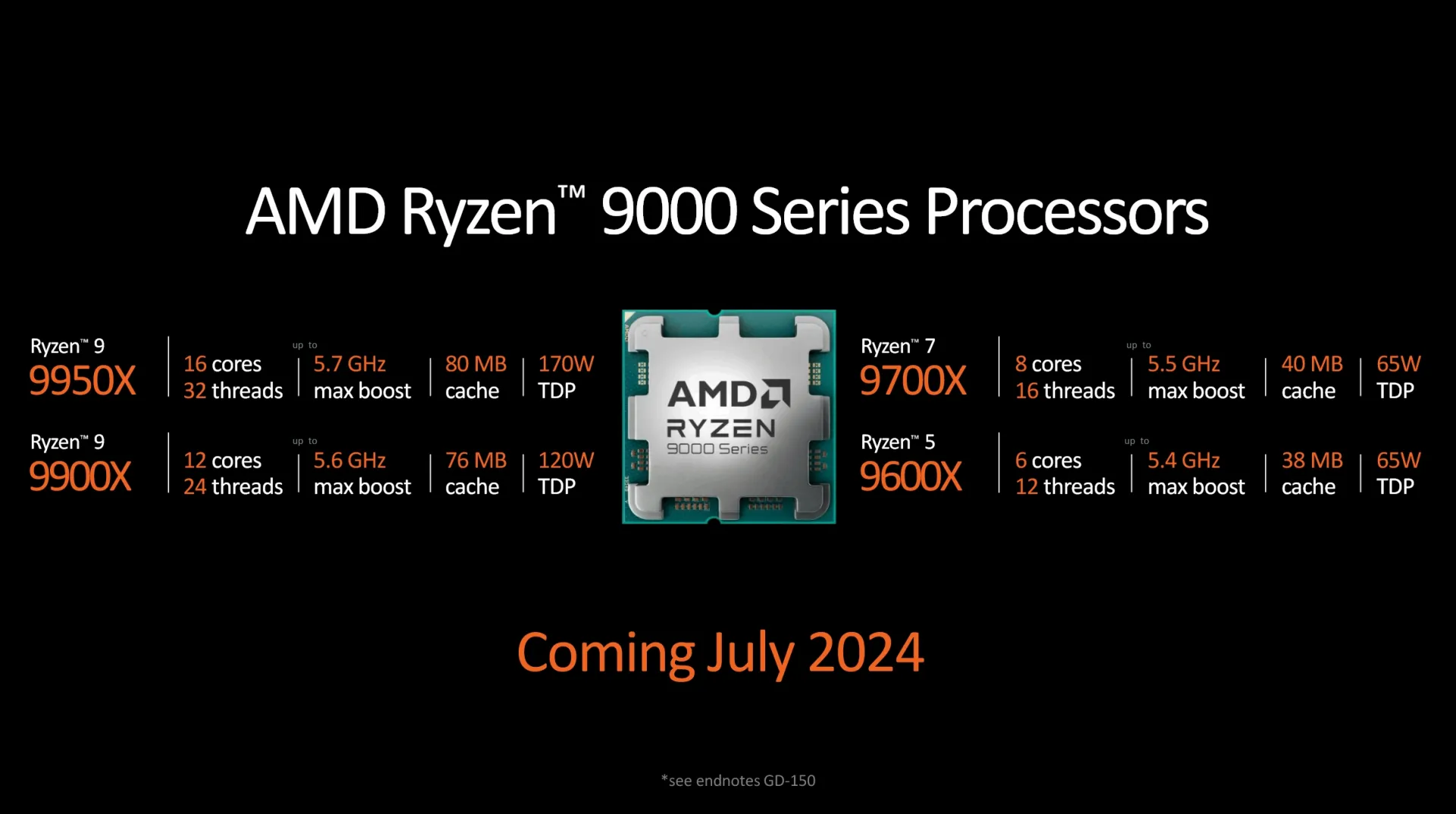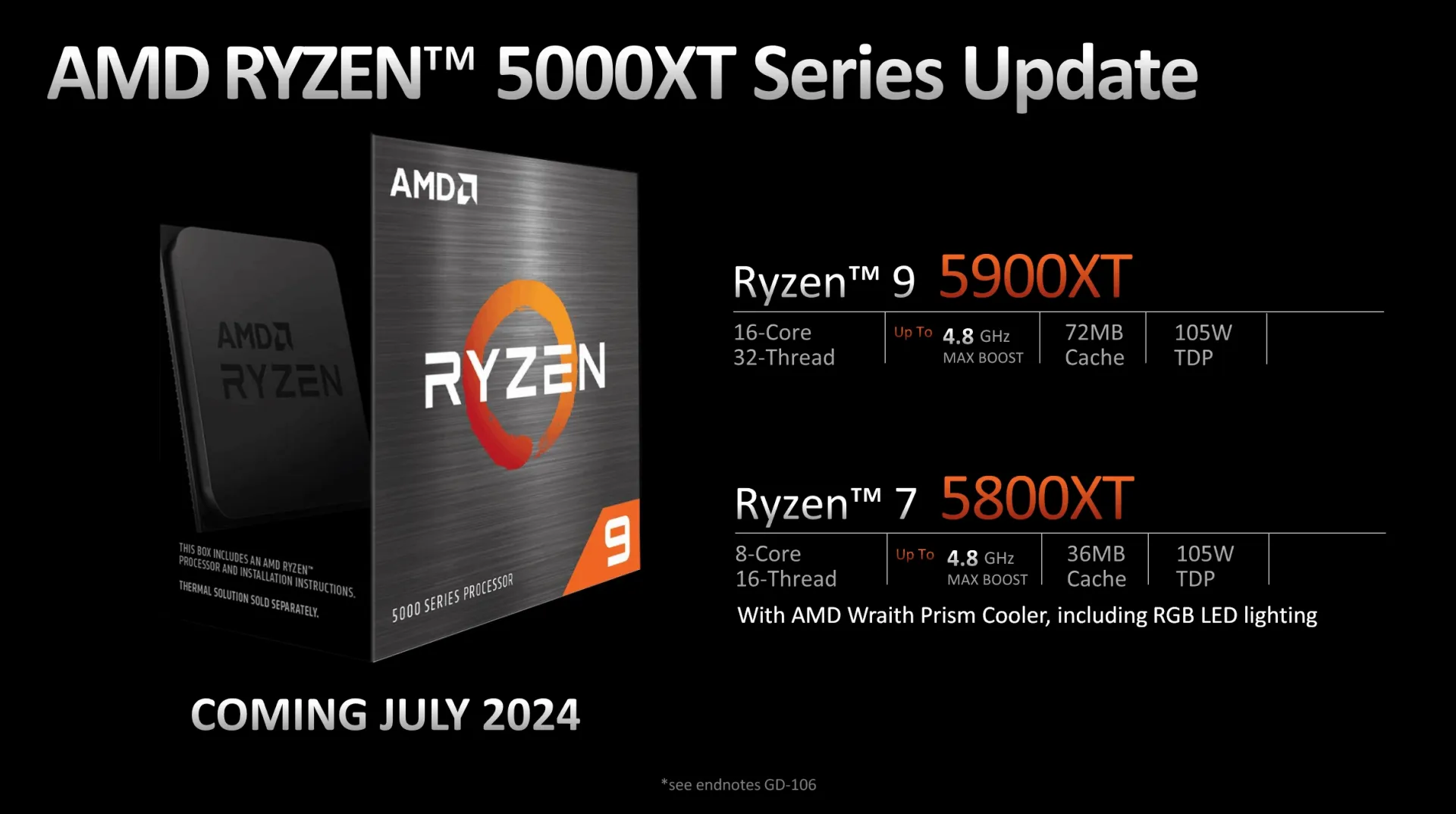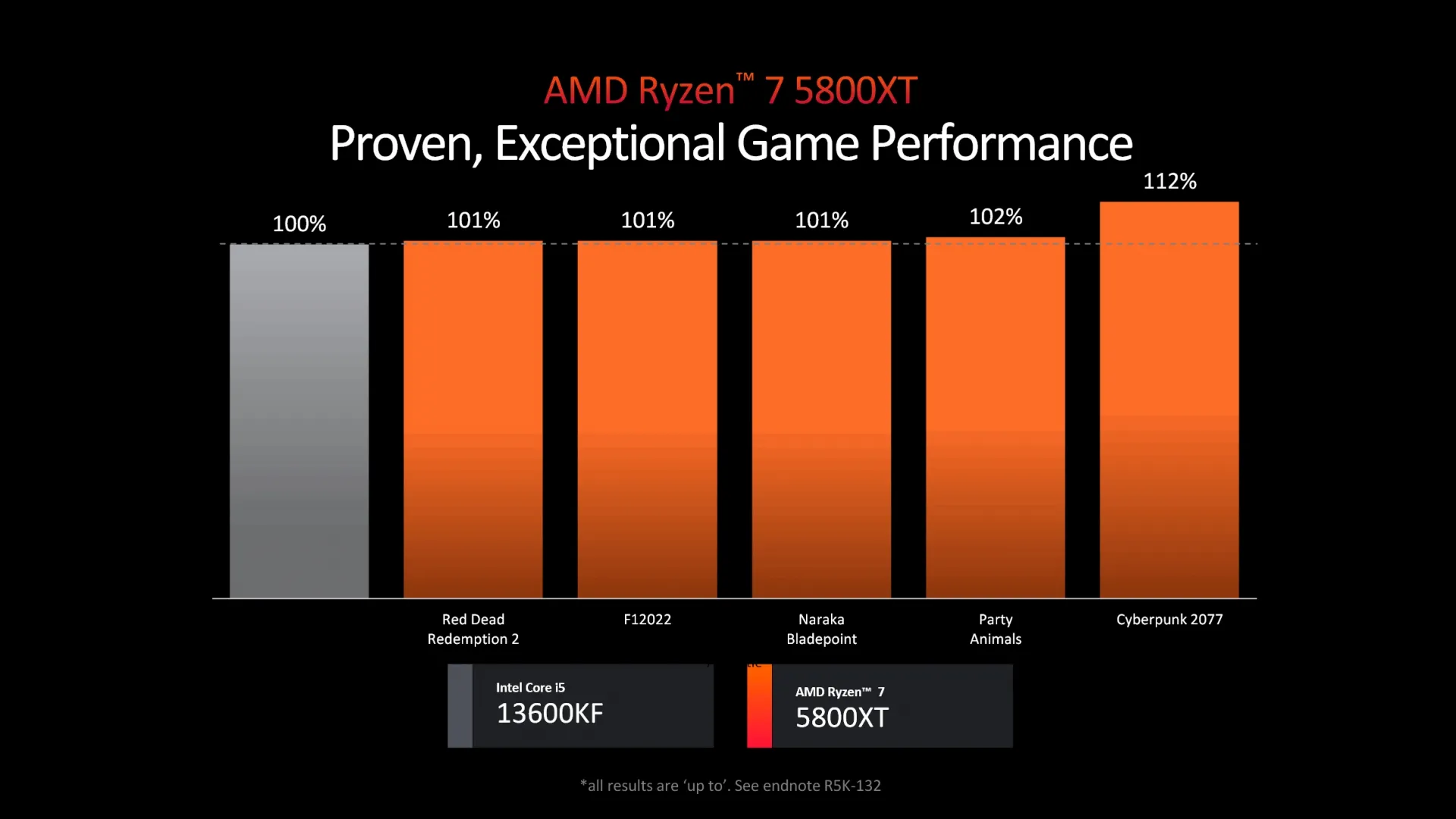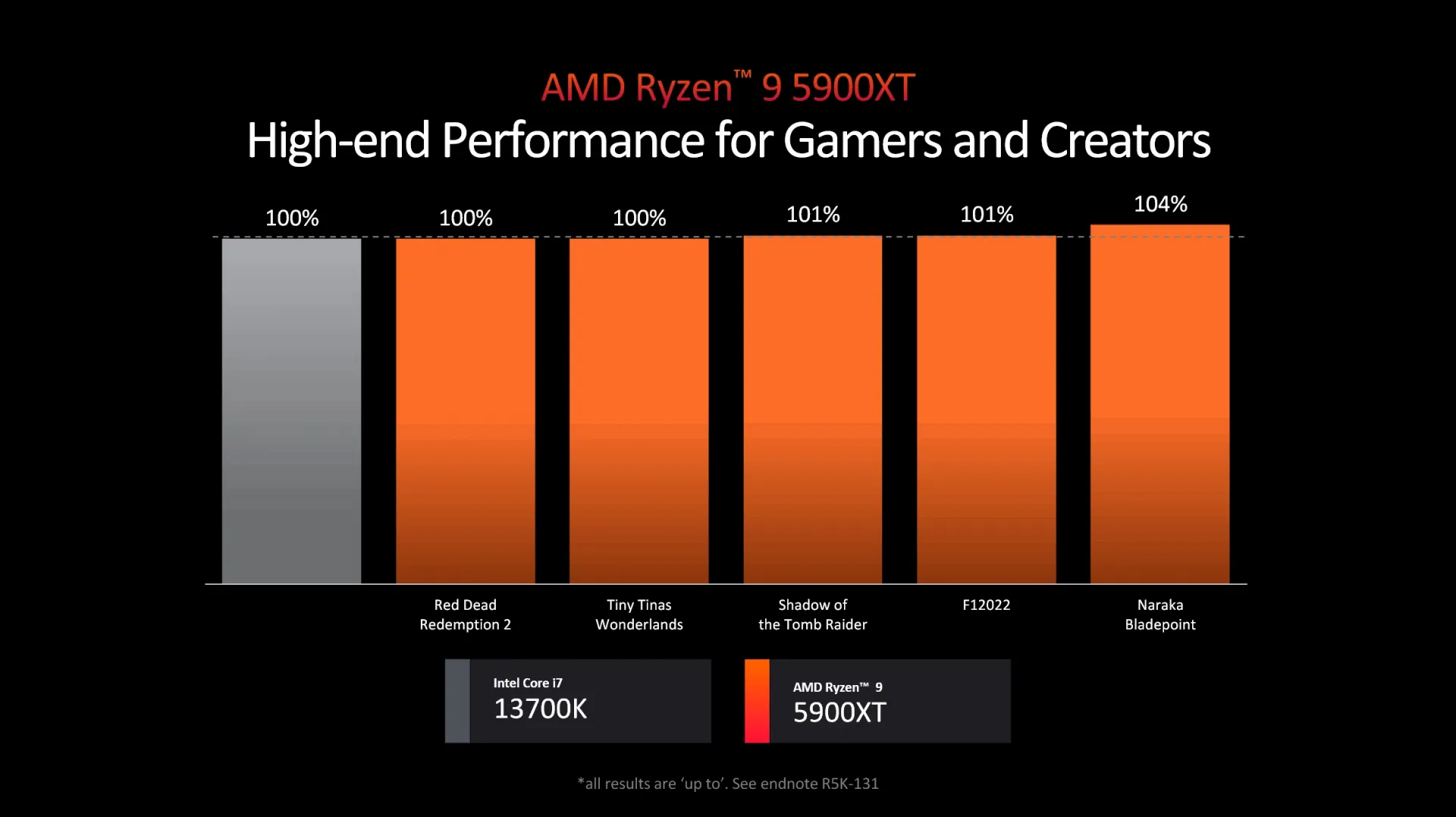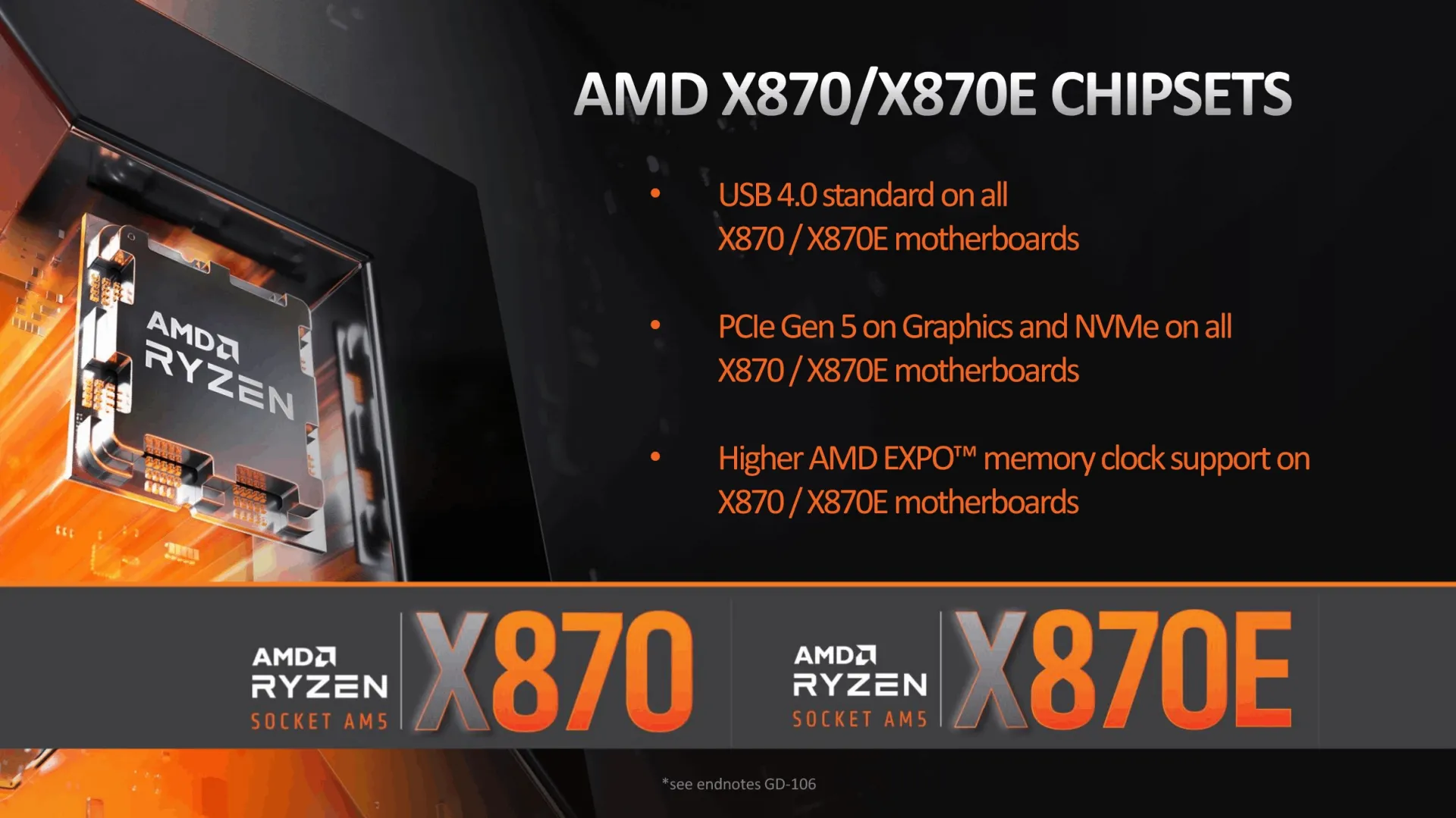AMD Ryzen 9000 desktop Zen5 - Ryzen 9 9950X with 16 cores up to 5.7 GHz and X870 Chipset
AMD is set to release the ZEN5 architecture based Ryzen 9 9950X, its flagship processor in July, which will feature 16 cores and 32 threads, achieving boost speeds up to 5.7 GHz. Uniquely, this processor will operate with a Thermal Design Power (TDP) of 170 watts and will include 80MB of total cache. The Ryzen 9 9950X will feature 16 Zen5 cores, reaching a maximum clock speed of 5.7 GHz, and will include an 80MB combined L2 and L3 cache. It will also incorporate a 2 Compute Unit (CU) RDNA2 integrated graphics and have a Thermal Design Power (TDP) of 170 watts. The Ryzen 9 9900X, on the other hand, will come with 12 Zen5 cores, a max clock speed of 5.6 GHz, a 76MB cache, the same 2CU RDNA2 graphics, and a lower TDP of 120 watts.
The Ryzen 9 9900X, another high-end SKU, will offer 12 cores and 24 threads with a boost capability of up to 5.6 GHz. It will have a reduced TDP of 120 watts compared to its predecessor and include 76MB of cache, marking a significant adjustment in power efficiency. Both of these Ryzen 9 models maintain the core count and clock speeds seen in the preceding Zen4 series but show enhancements in energy consumption and thermal management. This indicates AMD's ongoing commitment to improving power efficiency without sacrificing performance.
Further down the lineup, the Ryzen 7 9700X and Ryzen 5 9600X are also confirmed, featuring 8 and 6 Zen5 cores respectively. The 9700X will operate at up to 5.5 GHz with a 40MB cache and a TDP of 65 watts, while the 9600X will have a max clock of 5.4 GHz, a 38MB cache, and the same 65 watts TDP. All processors in this series will support AMD's AM5 socket platform. In addition to the processors, AMD is expected to launch new X870 and B850 motherboards that will accommodate the AM5 socket. These new boards are anticipated to debut at the Computex event, where AMD will likely showcase them alongside the new CPU series. This event will also see the unveiling of the Intel Z890 series, indicating a significant period for advancements in desktop computing hardware.
The adjustments in TDP across the new Ryzen models, with reductions ranging from 40 to 50 watts compared to their predecessors, point towards improved power efficiency—a key focus in the latest generation of AMD processors. These developments suggest that AMD is continuing to prioritize enhancements in performance and efficiency to maintain competitiveness with other leading chip manufacturers.
| AMD Ryzen for Desktop | |||||
|---|---|---|---|---|---|
| CPU Cores | Max Clock | L2+L3 Cache | iGPU | TDP | |
| AMD Ryzen 9000 (Granite Ridge) | |||||
| Ryzen 9 9950X | 16x Zen5 | 5.7 GHz | 80MB | 2CU RDNA2 | 170W |
| Ryzen 9 9900X | 12x Zen5 | 5.6 GHz | 76MB | 2CU RDNA2 | 120W |
| Ryzen 7 9700X | 8x Zen5 | 5.5 GHz | 40MB | 2CU RDNA2 | 65W |
| Ryzen 5 9600X | 6x Zen5 | 5.4 GHz | 38MB | 2CU RDNA2 | 65W |
| AMD Ryzen 7000 (Raphael) | |||||
| Ryzen 9 7950X3D | 16x Zen4 | 5.7 GHz | 144MB | 2CU RDNA2 | 120W |
| Ryzen 9 7950X | 16x Zen4 | 5.7 GHz | 80MB | 2CU RDNA2 | 170W |
| Ryzen 9 7900X3D | 12x Zen4 | 5.6 GHz | 140MB | 2CU RDNA2 | 120W |
| Ryzen 9 7900X | 12x Zen4 | 5.6 GHz | 76MB | 2CU RDNA2 | 170W |
| Ryzen 9 7900 | 12x Zen4 | 5.4 GHz | 76MB | 2CU RDNA2 | 65W |
| Ryzen 7 7800X3D | 8x Zen4 | 5.0 GHz | 104MB | 2CU RDNA2 | 120W |
| Ryzen 7 7700X | 8x Zen4 | 5.4 GHz | 40MB | 2CU RDNA2 | 105W |
| Ryzen 7 7700 | 8x Zen4 | 5.3 GHz | 40MB | 2CU RDNA2 | 65W |
| Ryzen 5 7600X | 6x Zen4 | 5.3 GHz | 38MB | 2CU RDNA2 | 105W |
| Ryzen 5 7600 | 6x Zen4 | 5.1 GHz | 38MB | 2CU RDNA2 | 65W |
| Ryzen 5 7500F | 6x Zen4 | 5.0 GHz | 38MB | 65W | |
The Ryzen 9 9950X will become the new flagship processor, which will feature 16 cores and 32 threads, achieving boost speeds up to 5.7 GHz. Uniquely, this processor will operate with a Thermal Design Power (TDP) of 170 watts and will include 80MB of total cache.
The Ryzen 9 9900X, another high-end SKU, will offer 12 cores and 24 threads with a boost capability of up to 5.6 GHz. It will have a reduced TDP of 120 watts compared to its predecessor and include 76MB of cache, marking a significant adjustment in power efficiency. Both of these Ryzen 9 models maintain the core count and clock speeds seen in the preceding Zen4 series but show enhancements in energy consumption and thermal management. This suggests AMD's ongoing dedication to improving power efficiency without sacrificing performance.
Moving to the mid-range offerings, the Ryzen 7 9700X will feature 8 cores and 16 threads with a maximum boost speed of 5.5 GHz and a notably lower TDP of 65 watts. It will come equipped with 40MB of cache. This marks a 100 MHz increase in boost speed over previous models while significantly decreasing the power requirement from 105 watts in earlier versions. The entry-level Ryzen 5 9600X will include 6 cores and boost up to 5.4 GHz. Like the 9700X, it will also maintain a TDP of 65 watts. This model is designed to offer robust performance for mainstream users and gamers looking for a balance between power and thermal efficiency.
These adjustments across the Ryzen 9000 series reflect AMD’s strategy of optimizing power efficiency across its latest processors, which is increasingly important for both everyday and power users concerned with energy consumption and heat output. This lineup demonstrates slight modifications in maximum clock speeds, particularly in lower-tier models, alongside more substantial reductions in TDP, pointing to AMD's focus on energy-efficient performance enhancements.
Architecture
The processors are engineered to provide an average Instruction Per Cycle (IPC) performance improvement of 16 percent over the previous Zen 4 architecture. This enhancement implies that the Zen 5 chips are designed to be 16 percent more efficient at the same clock speeds and core counts, contingent upon specific workloads. Unlike the incremental updates often seen between previous Zen iterations, AMD characterizes Zen 5 as a substantive leap forward from Zen 4. Several architectural improvements have been implemented to achieve this advancement. Among these, AMD has optimized the branch prediction accuracy and reduced its latency, for improving the processor's efficiency in predicting the direction of a branch instruction before it is confirmed. The company also enhanced the throughput capabilities by expanding the pipelines and vector sizes, which facilitates the handling of more data simultaneously and improves the core's parallel processing ability. Furthermore, Zen 5 processors are reported to have enlarged window sizes that allow for more instructions in the pipeline, enhancing the overall computational throughput.
In terms of data handling, AMD let us know that the Zen 5 architecture doubles the bandwidth for front-end instructions. This enhancement is also reflected in the increased data transfer rates between the L1 and L2 caches and from L1 cache to the floating-point (FP) unit, which should notably boost the processor's efficiency in handling complex computations and data-intensive tasks.
A significant area of improvement in the Zen 5 series is its AI processing capabilities. While the desktop variants of these processors do not include a dedicated Neural Processing Unit (NPU) for AI tasks—unlike their Ryzen AI laptop counterparts—AMD states that the AI performance on the Zen 5 desktop CPUs is expected to be double that of the Ryzen 7000 series based on Zen 4 architecture.
Zen 5 processors continue to support DDR5 memory, providing higher bandwidth and better power efficiency compared to DDR4. The integration of PCIe 5.0 lanes is also maintained, enhancing the potential for faster and more flexible system expansions. Although specific details on the number of available PCIe lanes in the Zen 5 CPUs were not disclosed, it is anticipated to be consistent with the previous Zen 4-based Ryzen 7000 series, which featured 28 PCIe 5.0 lanes. These lanes are typically allocated with 16 lanes dedicated to a video card, eight lanes to SSDs, and the remaining four lanes facilitating communication with the chipset.
Ryzen 7 5700XT and Ryzen 9 5900XT
AMD will also be adding two Series 5000XT processors, for an easy upgrade. two new AM4 CPUs—the Ryzen 9 5900XT and the Ryzen 7 5800XT. This introduction sees a reduction in the number of models compared to the Ryzen 3000XT series launched in 2020, while continuing to target similar enhancements. Both models boast a 105-watt TDP and a maximum boost speed of 4.8 GHz, aligning them with some of the top specifications from their predecessors. The Ryzen 9 5900XT diverges from expectations by combining a maximum boost clock similar to the Ryzen 9 5900X, yet adopting the core and cache count from the Ryzen 5950X. Although the name suggests it might be a 12-core processor, it is in fact a 16-core model. In contrast, the Ryzen 7 5800XT aligns with the top clock speeds among AM4 8-core CPUs, reaching up to 4.8 GHz. The Ryzen 9 5900XT will feature 16 cores and the Ryzen 7 5800XT will have 8 cores, both maintaining the same 105W TDP and leveraging the Zen3 architecture, based on the Vermeer silicon.
AMD 800-Series Chipset Update: Introducing X870 as the Successor to B650E
AMD also unveils its new 800-series chipset family, designed to enhance the capabilities of these cutting-edge processors. The 800-series will be spearheaded by the AMD X870E chipset, followed by the X870, with both set to launch simultaneously with the Ryzen 9000 series. Later additions will likely include the B850 and B840 chipsets, with the current A620 chipset continuing as the entry-level option. This series introduces a revised product segmentation strategy. Key distinctions in the 800-series begin with the high-end X870E and X870 chipsets. The X870E is a dual-chip solution incorporating two Promontory21 chipsets, supporting PCIe Gen5 x16 and at least one PCIe Gen5 SSD. X870 will feature a single Promontory21 chipset, offering similar PCIe Gen5 x16 support but differing in its downstream general-purpose PCIe lane configurations.
Though not yet announced you can expect for the mid-range sector, the B650E and B650 to be succeeded by the B850 and B840. The B850 will maintain a similar configuration to the X870 concerning downstream PCIe Gen 4 lanes and will include a Gen 5 x16 PEG slot, although it allows for optional Gen 5 or Gen 4 NVMe slots depending on the motherboard manufacturer’s choice. The B850, unlike its higher-tier counterparts, will not guarantee USB4 connectivity, though manufacturers can add discrete USB4 controllers. The B840 represents a new tier within the portfolio, lacking any form of PCIe Gen5 support and omitting CPU overclocking capabilities. It will, however, support memory overclocking and is expected to be compatible with AMD EXPO and manual memory adjustments. Its connectivity suite includes Gen 4 PCIe across both PEG and general-purpose lanes, positioning it as an upgrade from the A620 and similar to the older B550 in terms of feature set. Additional comparisons reveal that the previous X670E and X670 differ mainly in their PCIe capabilities, with the X670 limited to Gen 4 on the PEG slot while still supporting Gen 5 NVMe slots attached to the CPU. Both chipsets were dual-chip configurations, with the secondary chip enhancing the general-purpose PCIe lanes of the primary chip linked directly to the processor. The new X870E retains this dual-chip configuration but updates it to match PCIe Gen 4 general-purpose lane counts similar to those of the X870E.
